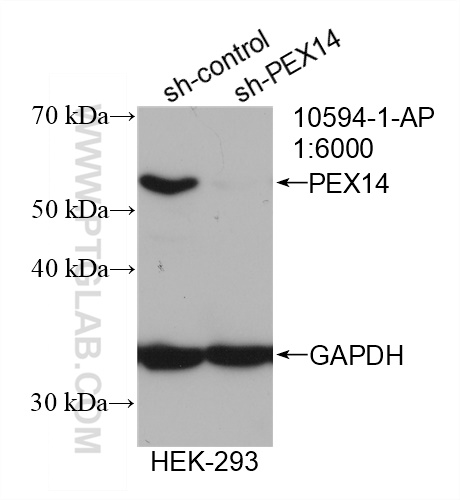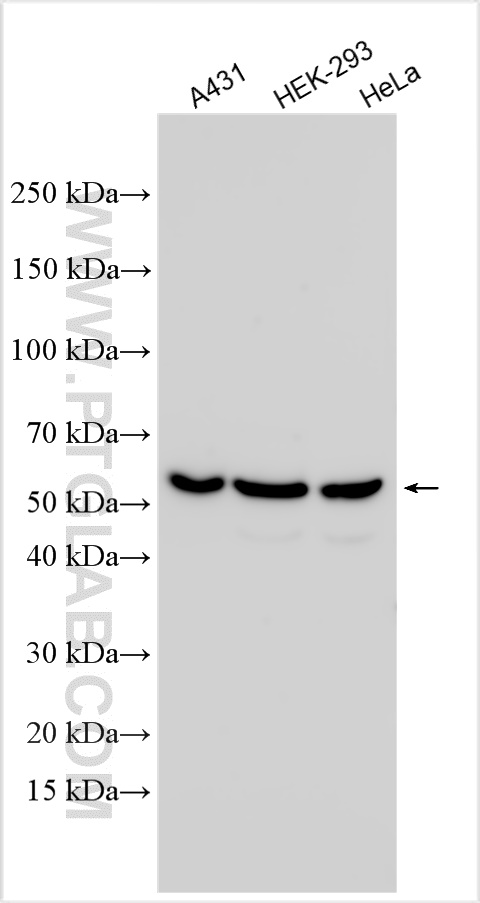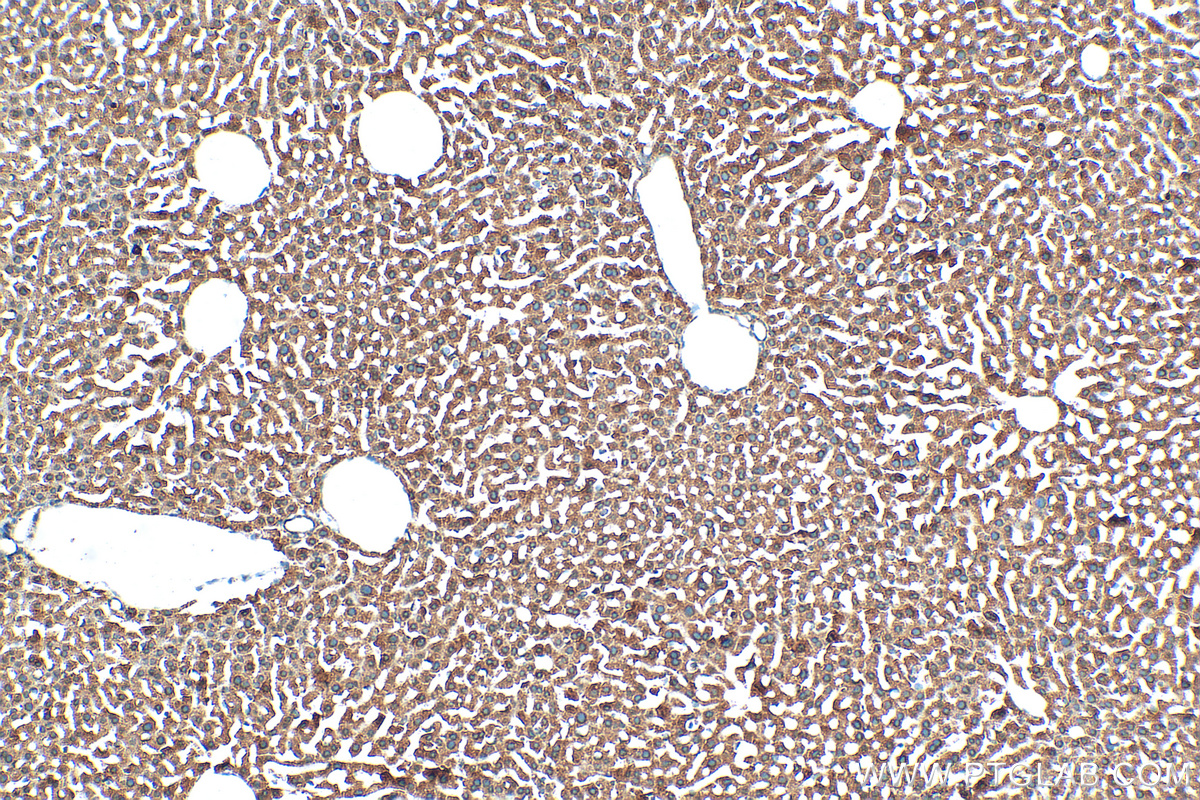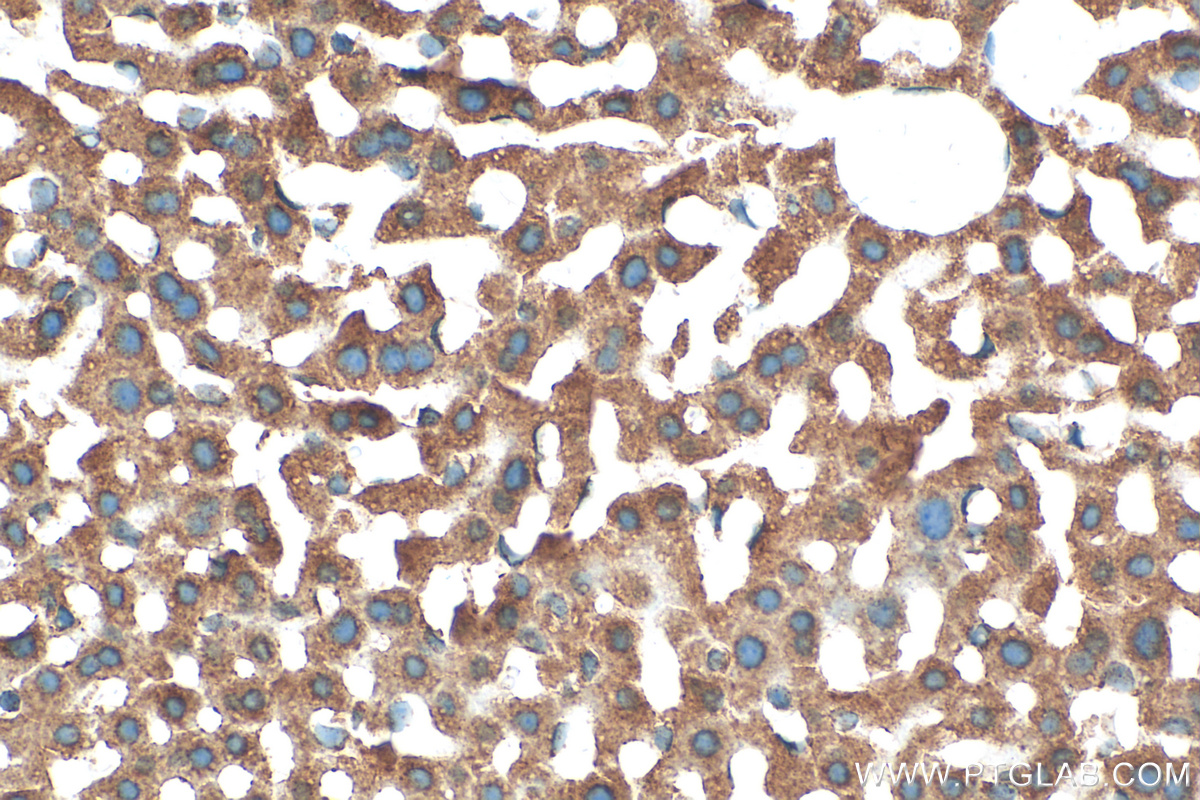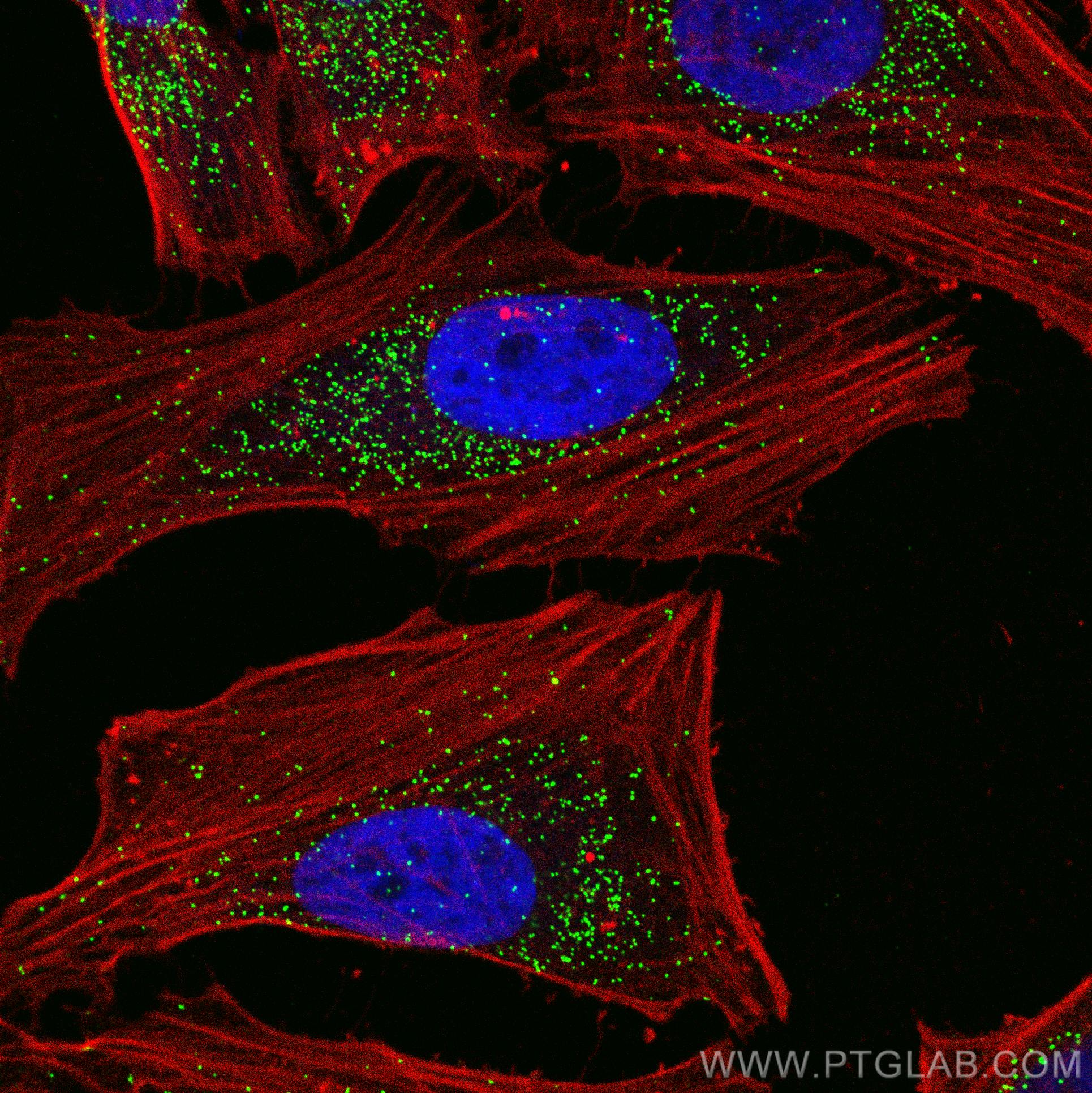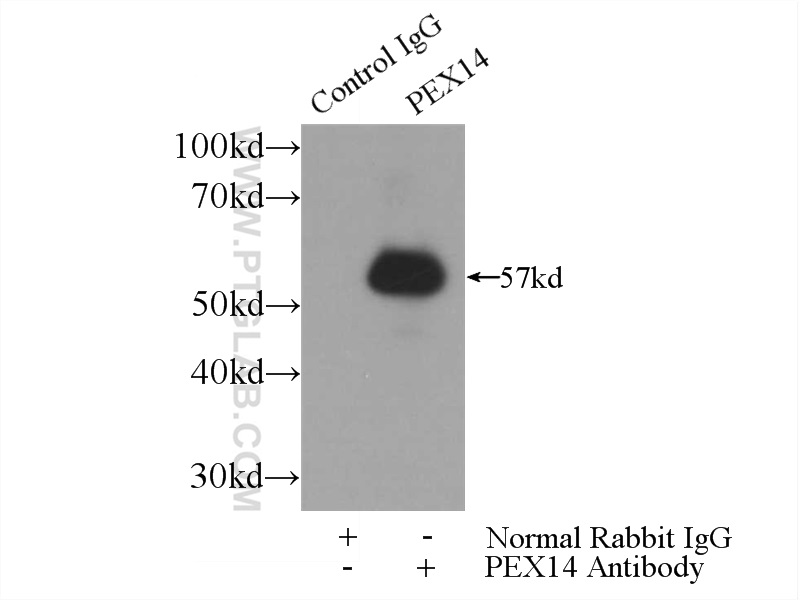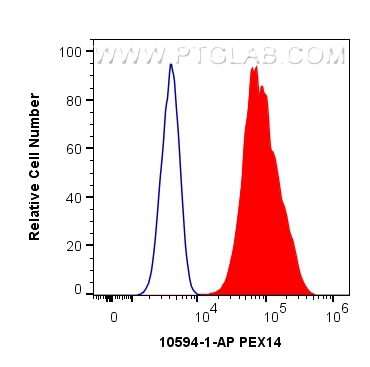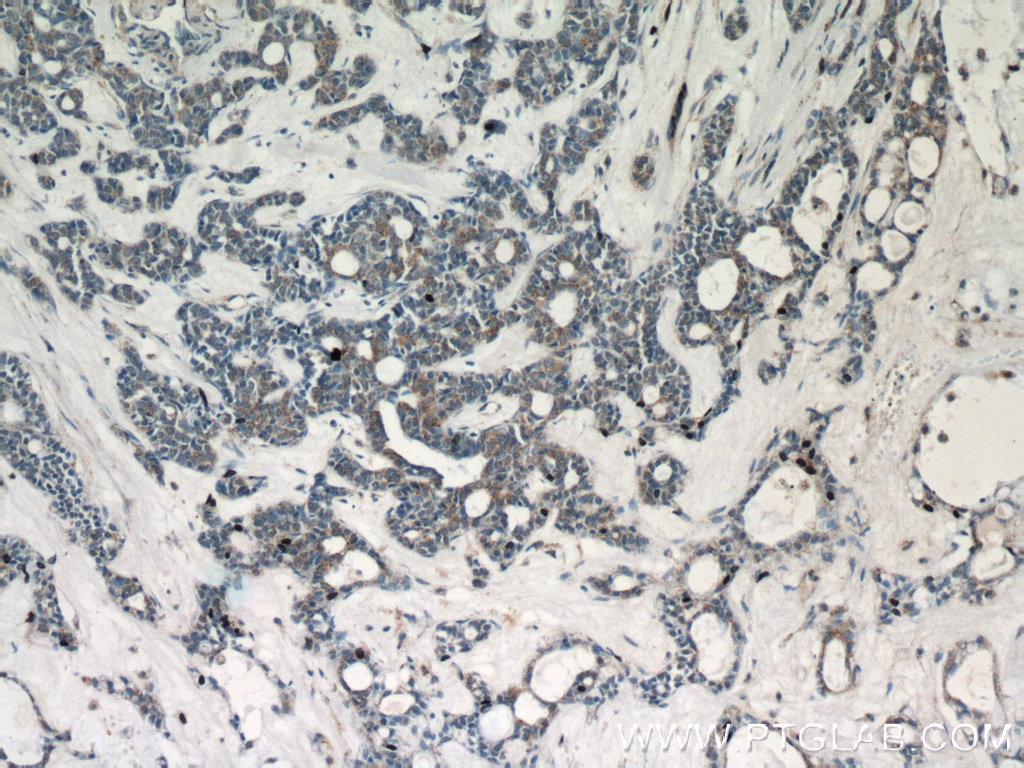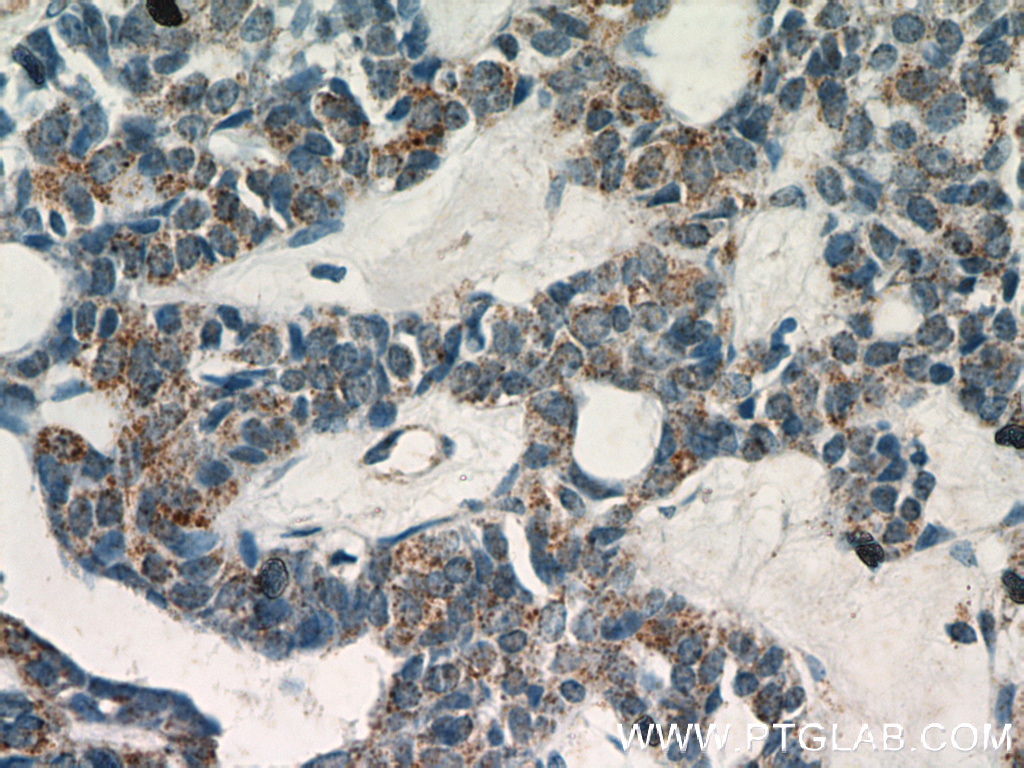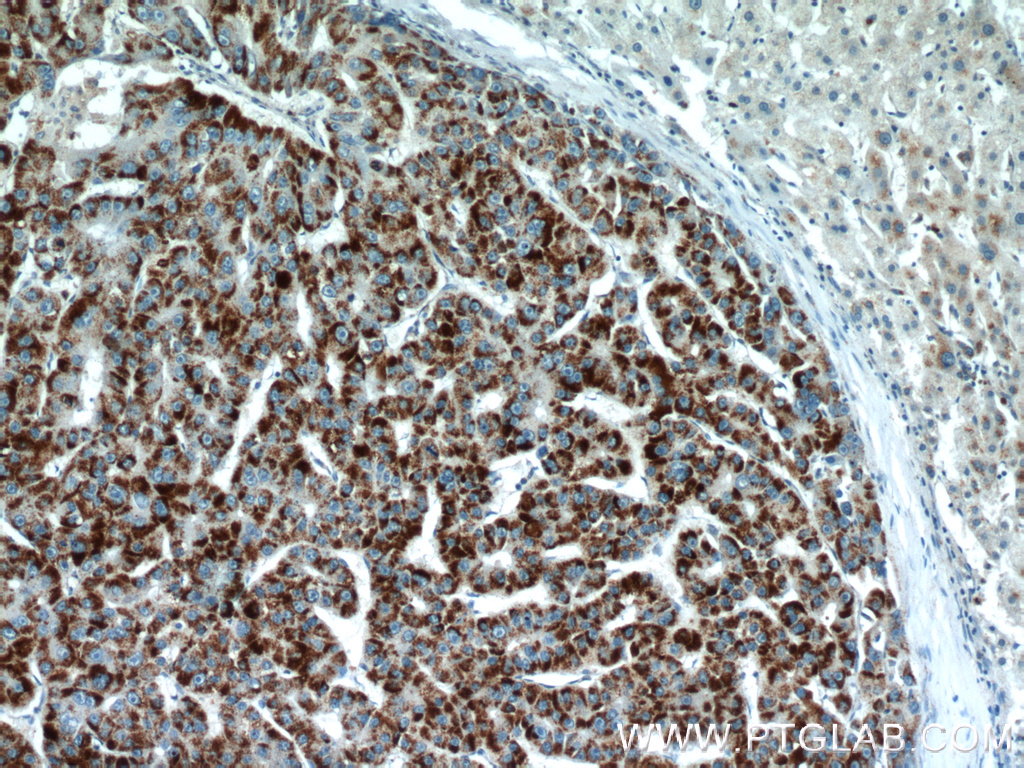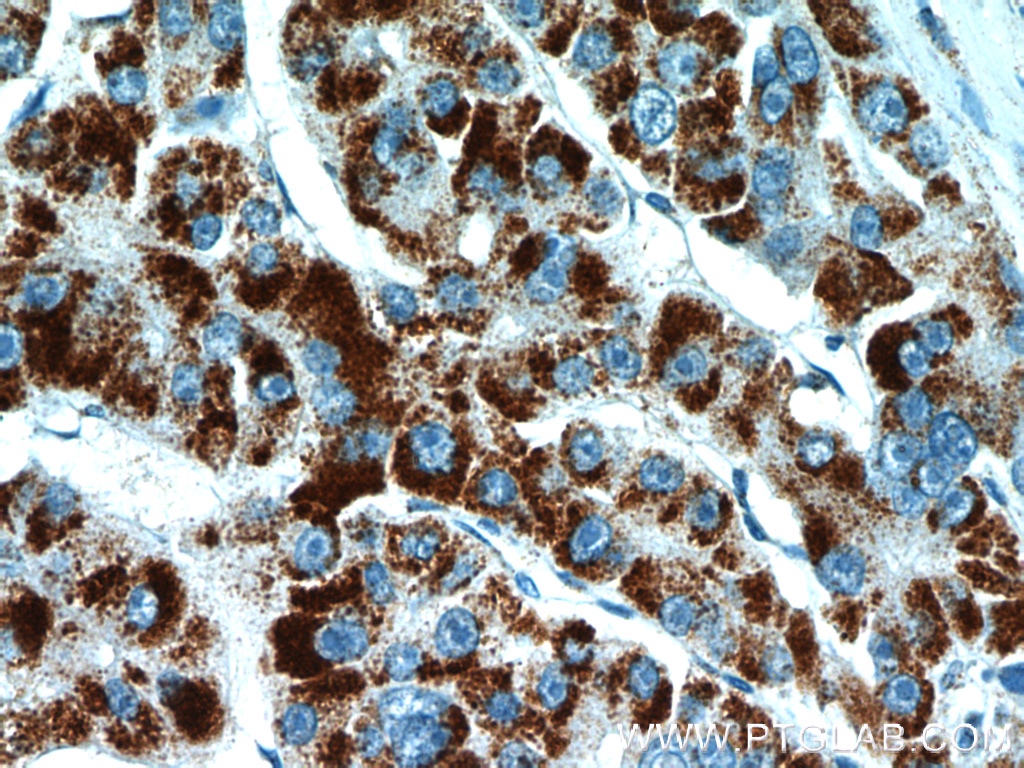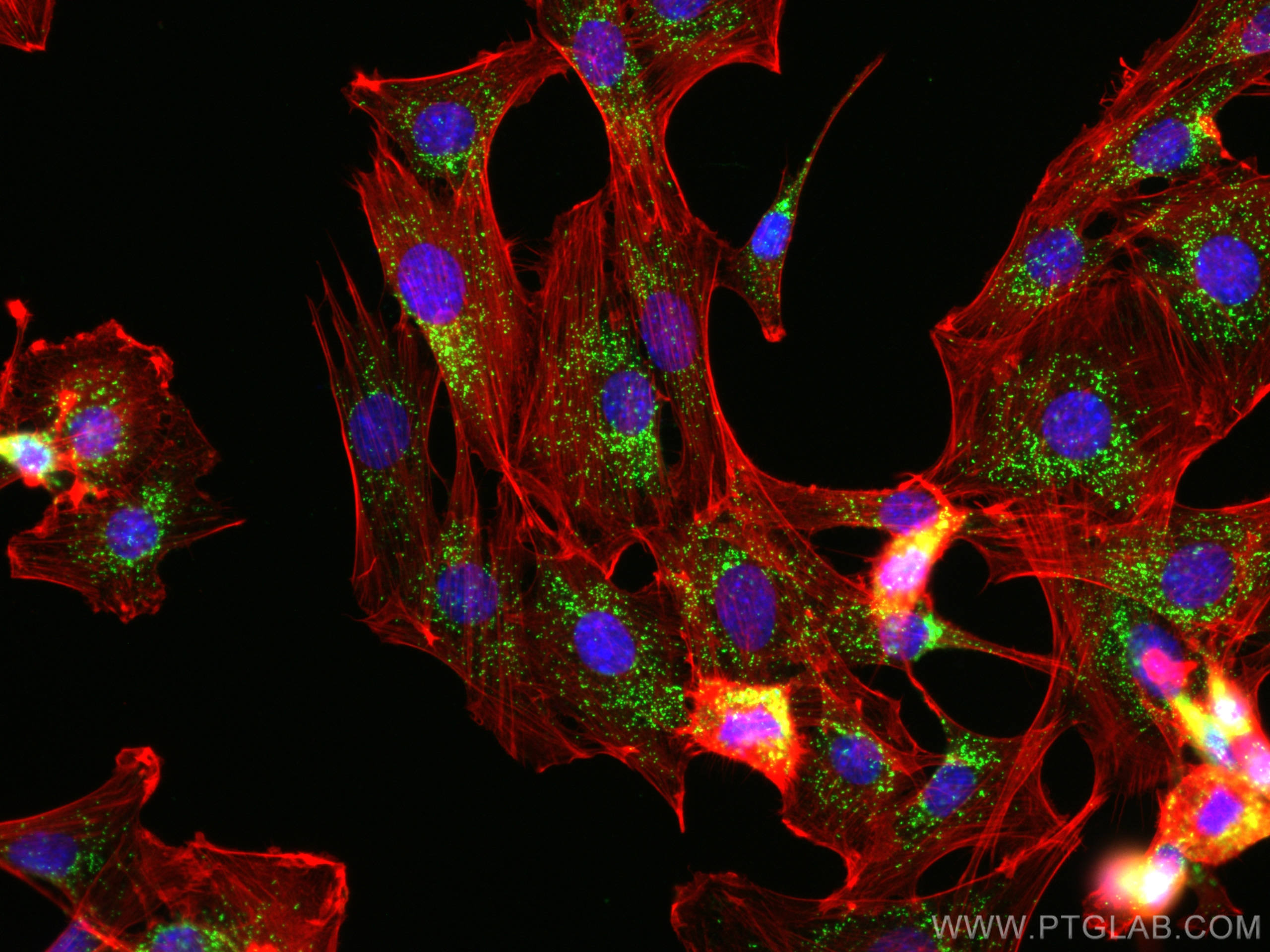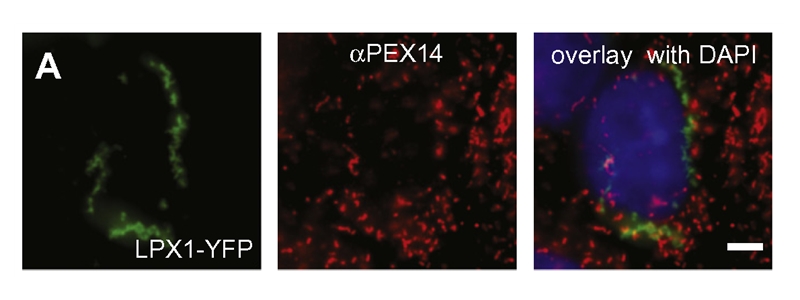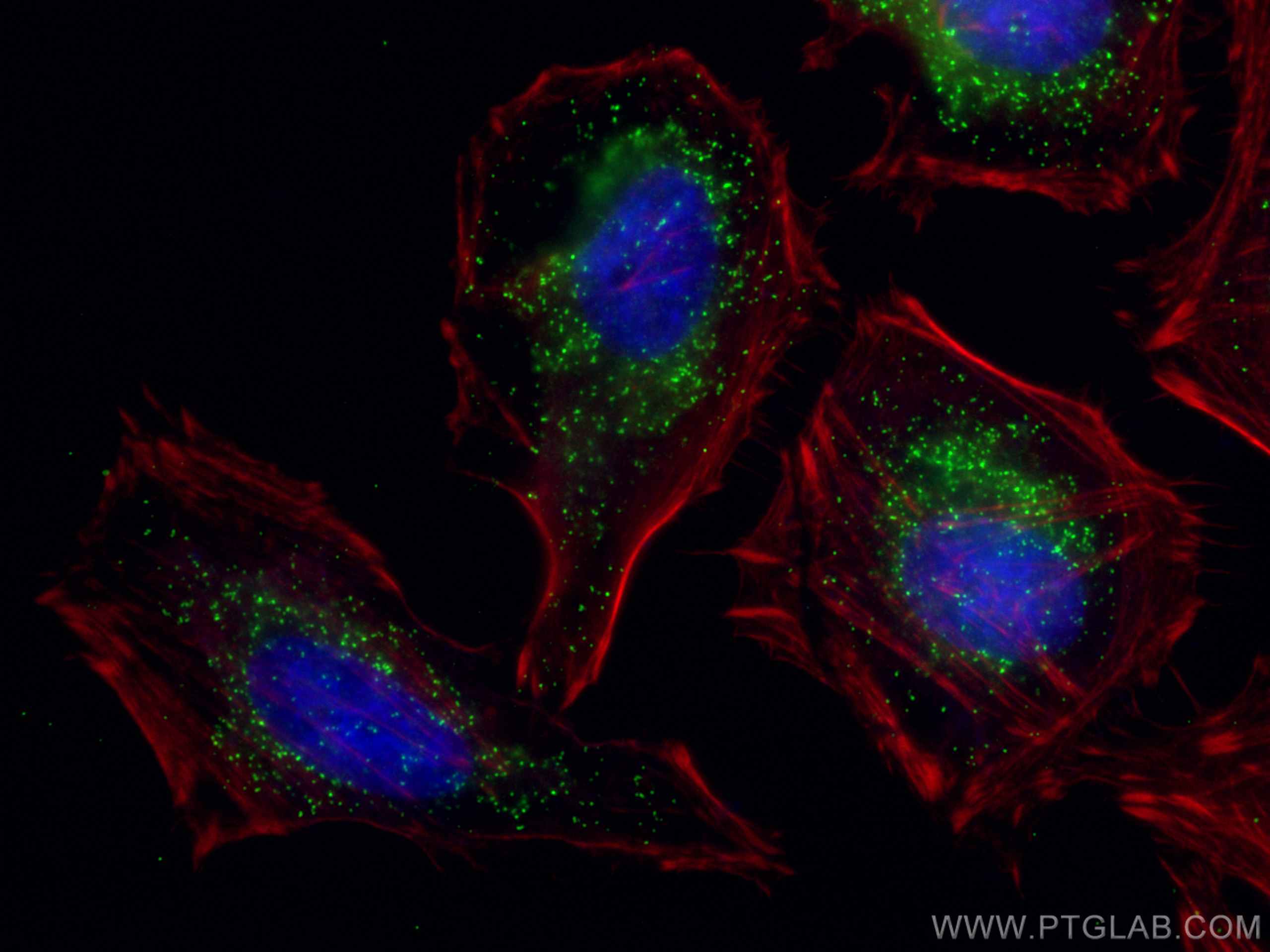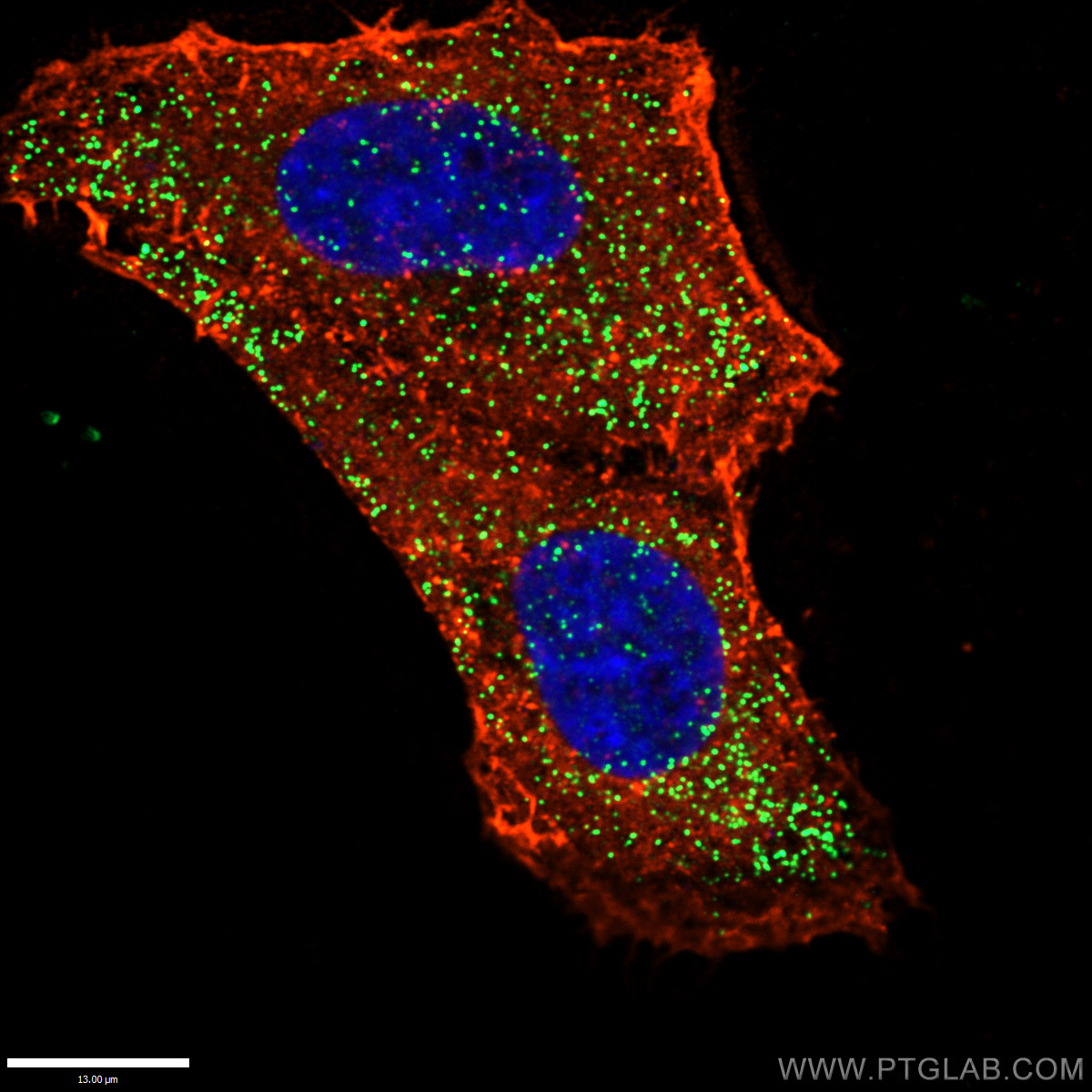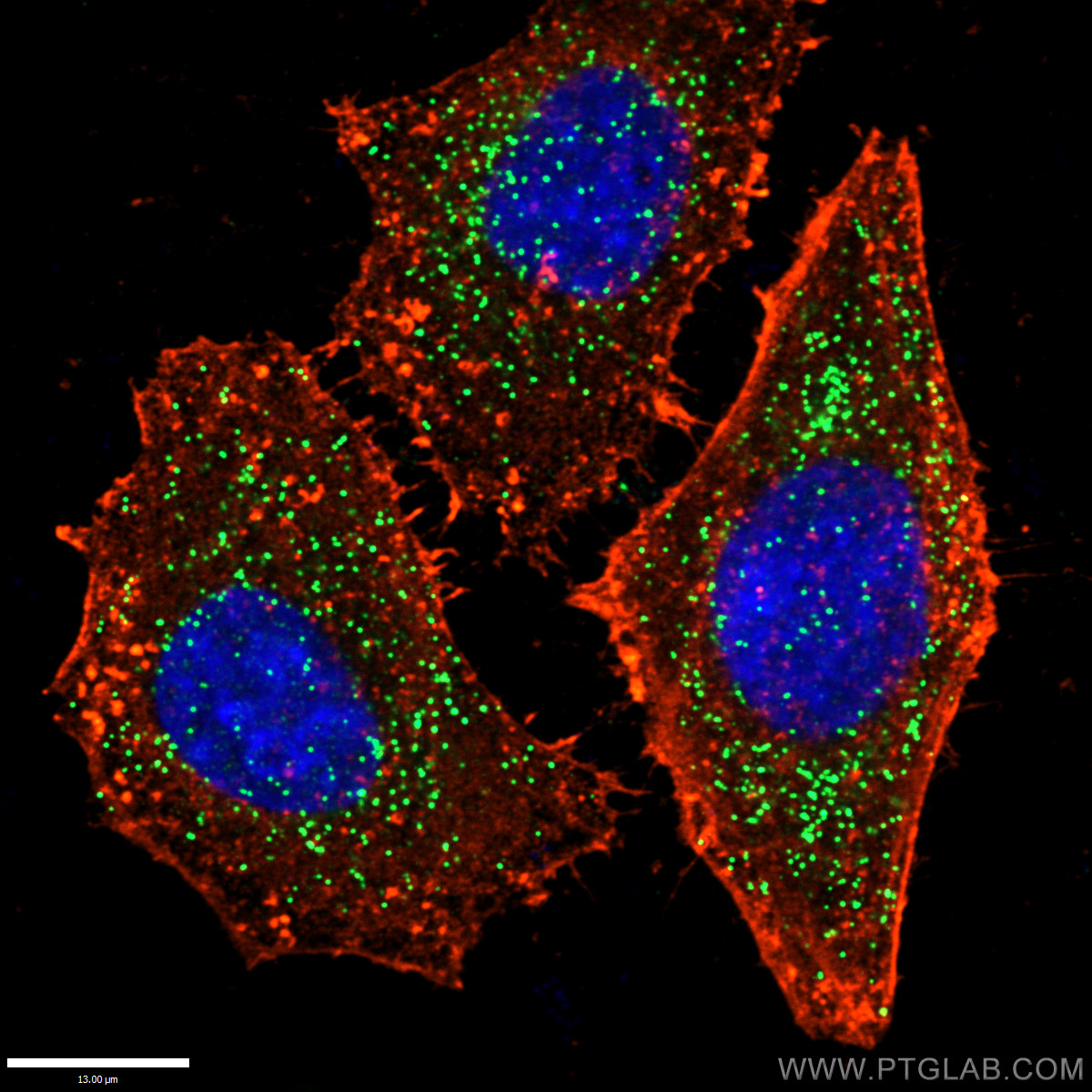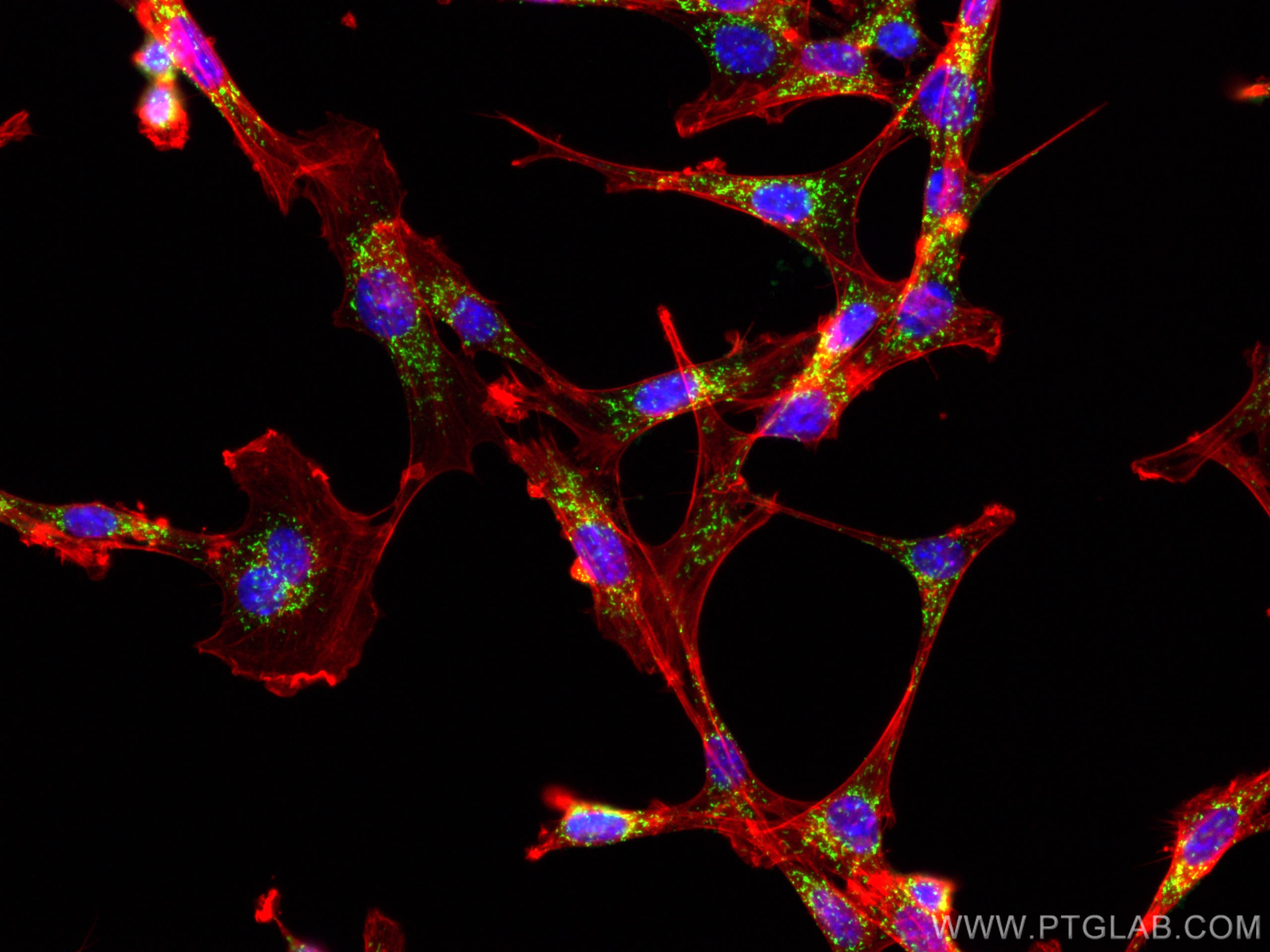验证数据展示
经过测试的应用
| Positive WB detected in | A431 cells, HEK-293 cells, HeLa cells |
| Positive IP detected in | mouse liver tissue |
| Positive IHC detected in | mouse liver tissue, human liver cancer tissue, human cervical cancer tissue Note: suggested antigen retrieval with TE buffer pH 9.0; (*) Alternatively, antigen retrieval may be performed with citrate buffer pH 6.0 |
| Positive IF/ICC detected in | HeLa cells, COS7 cells, HepG2 cells, NIH/3T3 cells, C2C12 cells |
| Positive FC (Intra) detected in | HeLa cells |
推荐稀释比
| Application | Dilution |
|---|---|
| Western Blot (WB) | WB : 1:2000-1:16000 |
| Immunoprecipitation (IP) | IP : 0.5-4.0 ug for 1.0-3.0 mg of total protein lysate |
| Immunohistochemistry (IHC) | IHC : 1:200-1:800 |
| Immunofluorescence (IF)/ICC | IF/ICC : 1:500-1:2000 |
| Flow Cytometry (FC) (INTRA) | FC (INTRA) : 0.40 ug per 10^6 cells in a 100 µl suspension |
| It is recommended that this reagent should be titrated in each testing system to obtain optimal results. | |
| Sample-dependent, Check data in validation data gallery. | |
产品信息
10594-1-AP targets PEX14 in WB, IHC, IF/ICC, FC (Intra), IP, ELISA applications and shows reactivity with human, mouse, rat, monkey samples.
| Tested Applications | WB, IHC, IF/ICC, FC (Intra), IP, ELISA Application Description |
| Cited Applications | WB, IHC, IF |
| Tested Reactivity | human, mouse, rat, monkey |
| Cited Reactivity | human, mouse, rat, monkey, chicken, yeast |
| Immunogen | PEX14 fusion protein Ag0932 种属同源性预测 |
| Host / Isotype | Rabbit / IgG |
| Class | Polyclonal |
| Type | Antibody |
| Full Name | peroxisomal biogenesis factor 14 |
| Synonyms | PTS1 receptor docking protein, Pex14p, PEX, Peroxin-14, Peroxin 14 |
| Calculated Molecular Weight | 41 kDa |
| Observed Molecular Weight | 57 kDa |
| GenBank Accession Number | BC006327 |
| Gene Symbol | PEX14 |
| Gene ID (NCBI) | 5195 |
| RRID | AB_2252194 |
| Conjugate | Unconjugated |
| Form | Liquid |
| Purification Method | Antigen affinity purification |
| UNIPROT ID | O75381 |
| Storage Buffer | PBS with 0.02% sodium azide and 50% glycerol pH 7.3. |
| Storage Conditions | Store at -20°C. Stable for one year after shipment. Aliquoting is unnecessary for -20oC storage. |
背景介绍
PEX14 (peroxisomal biogenesis factor 14) is a peroxisomal membrane protein that is essential for protein docking onto the peroxisomes. It is a central component of the peroxisimal matrix protein import machinery and interacts with PEX5 and PEX19. PEX14 is ubiquitously expressed and defects in PEX14 are the cause of peroxisome biogenesis disorder complementation group K (PBD-CGK). This antibody can be used to detect endogenous PEX14 with an apparent molecular weight of 57 kDa (PMID: 16449325; 9653144) and recognize peroxisomal structures in human, monkey and mouse cells.
实验方案
| Product Specific Protocols | |
|---|---|
| WB protocol for PEX14 antibody 10594-1-AP | Download protocol |
| IHC protocol for PEX14 antibody 10594-1-AP | Download protocol |
| IF protocol for PEX14 antibody 10594-1-AP | Download protocol |
| IP protocol for PEX14 antibody 10594-1-AP | Download protocol |
| Standard Protocols | |
|---|---|
| Click here to view our Standard Protocols |
发表文章
| Species | Application | Title |
|---|---|---|
Science Golgi-derived PI(4)P-containing vesicles drive late steps of mitochondrial division. | ||
Nat Chem Biol Peroxisomal-derived ether phospholipids link nucleotides to respirasome assembly. |
